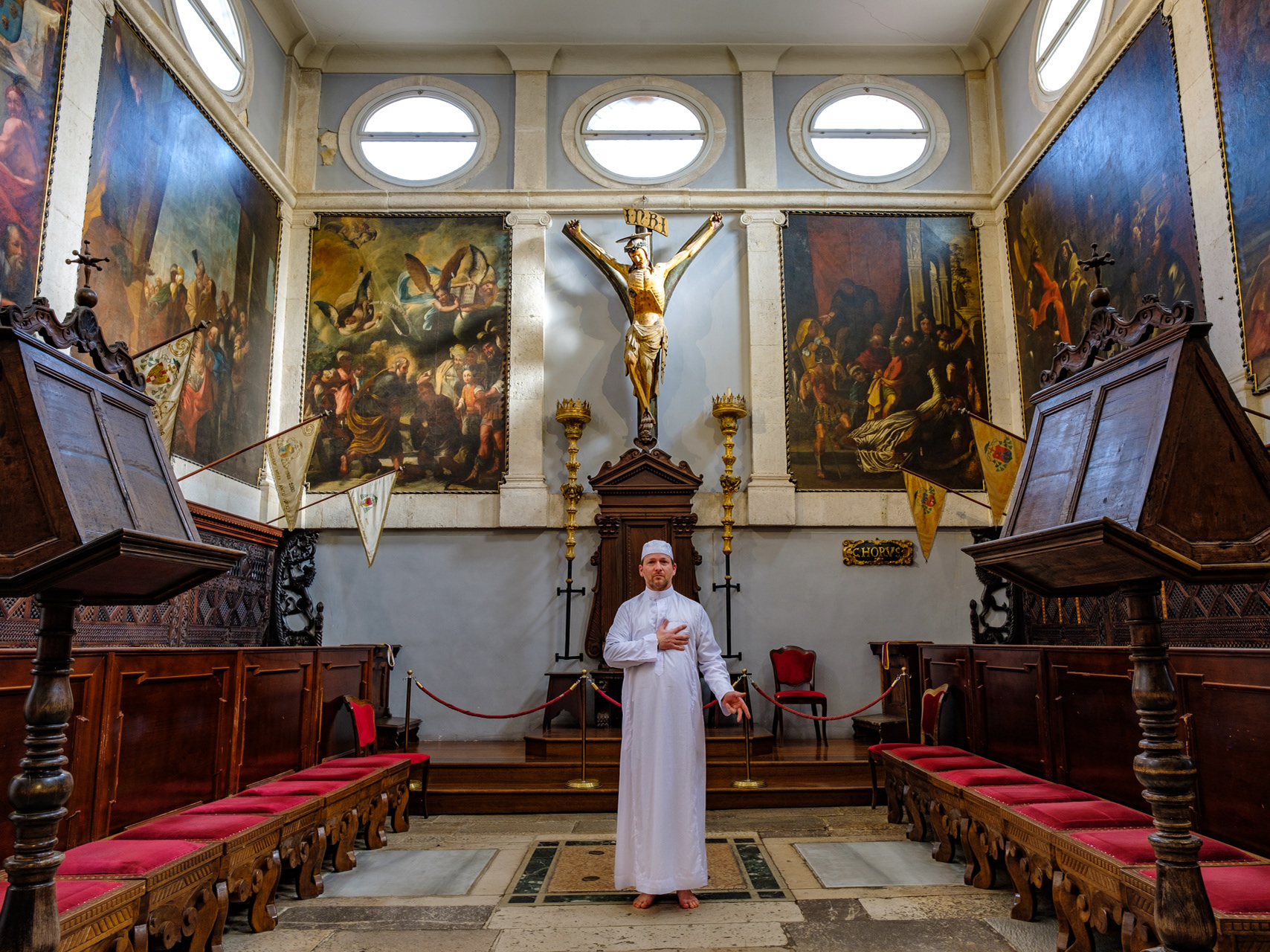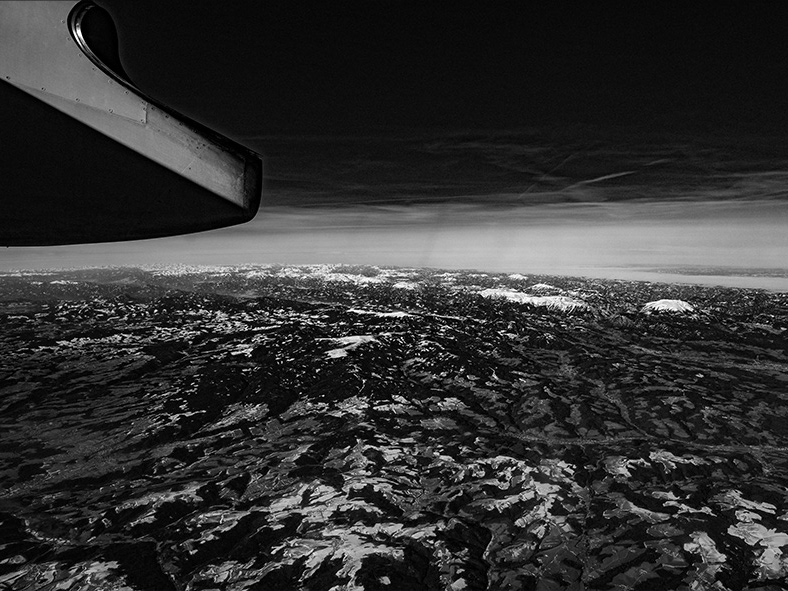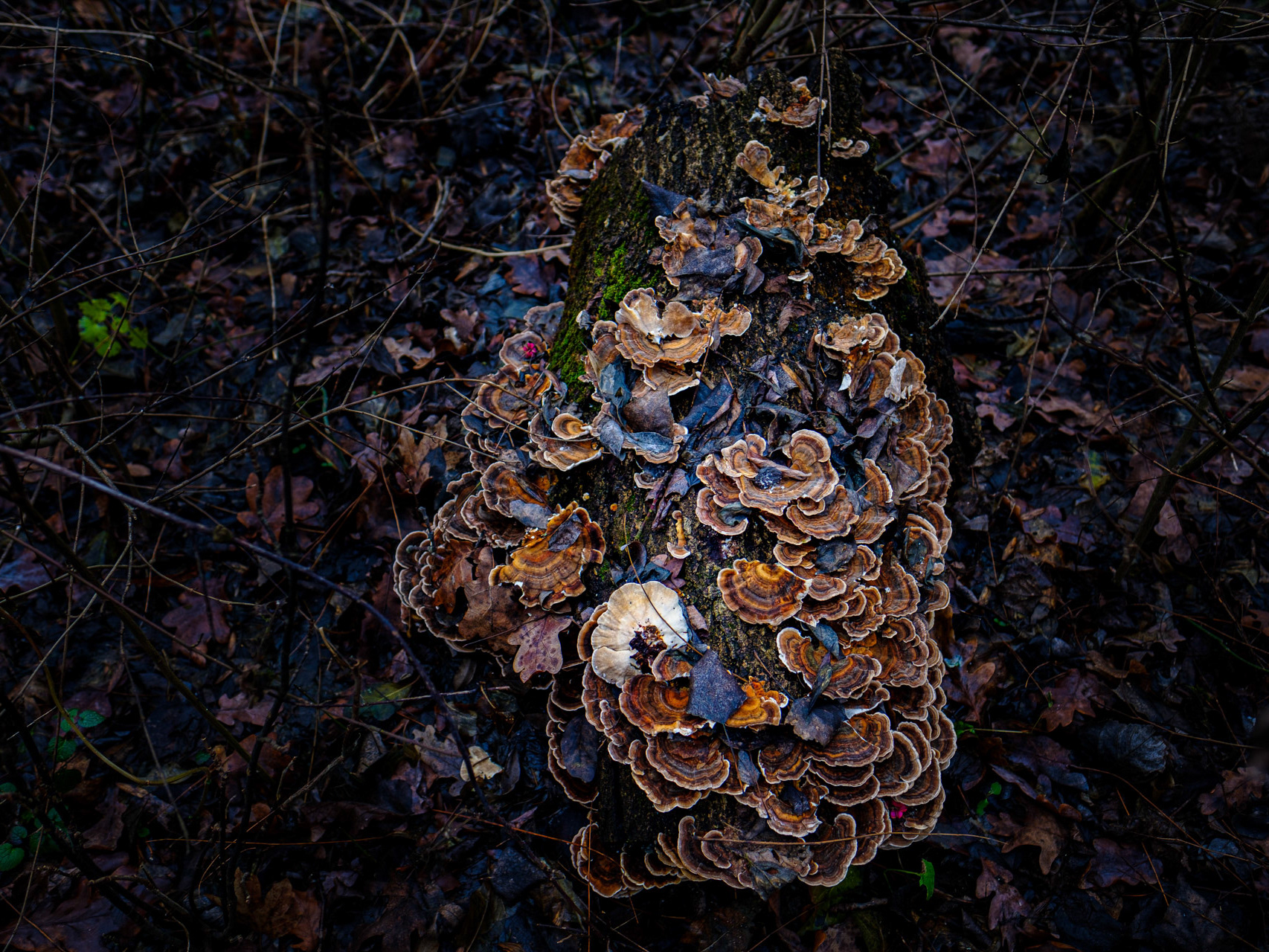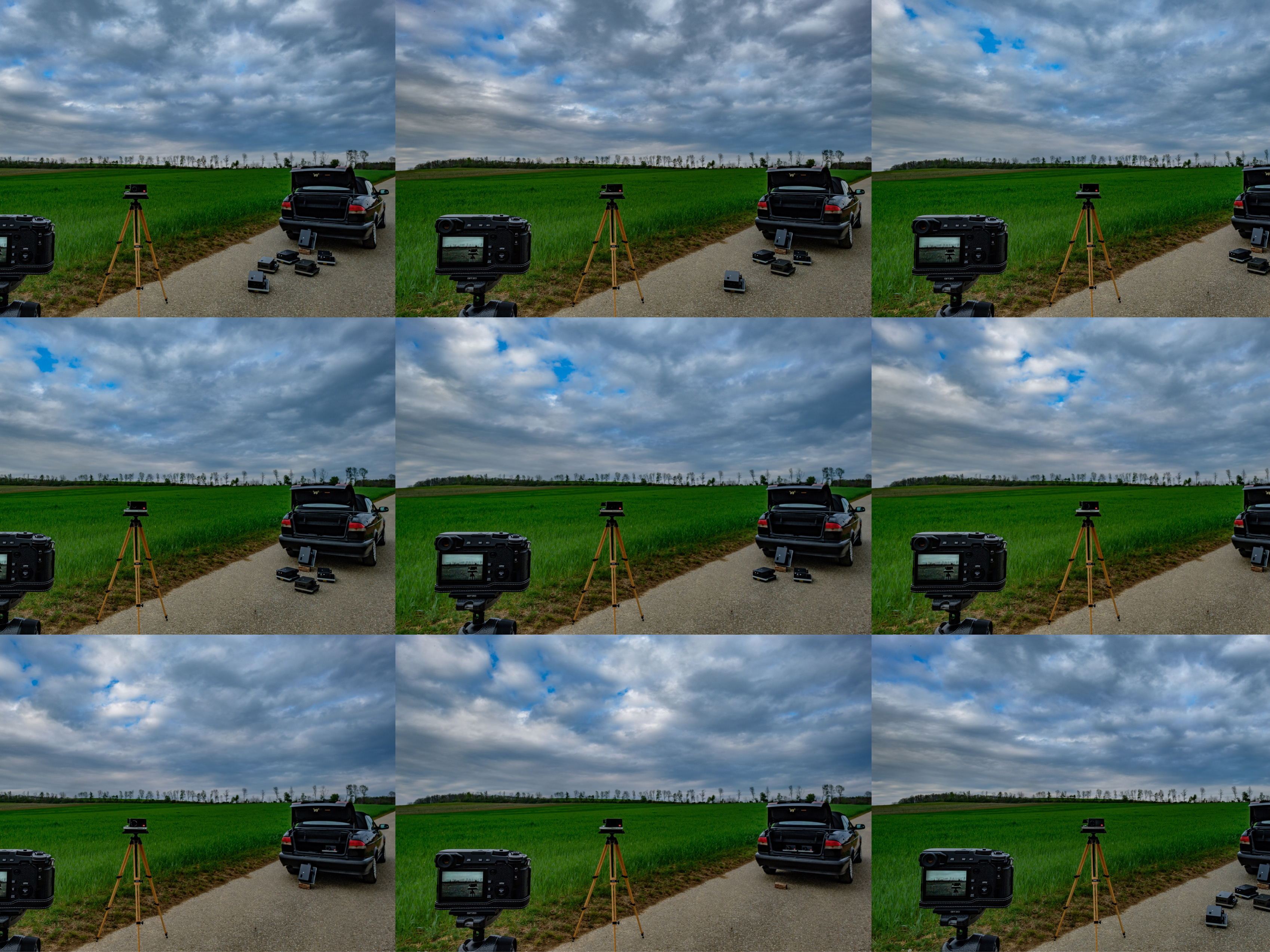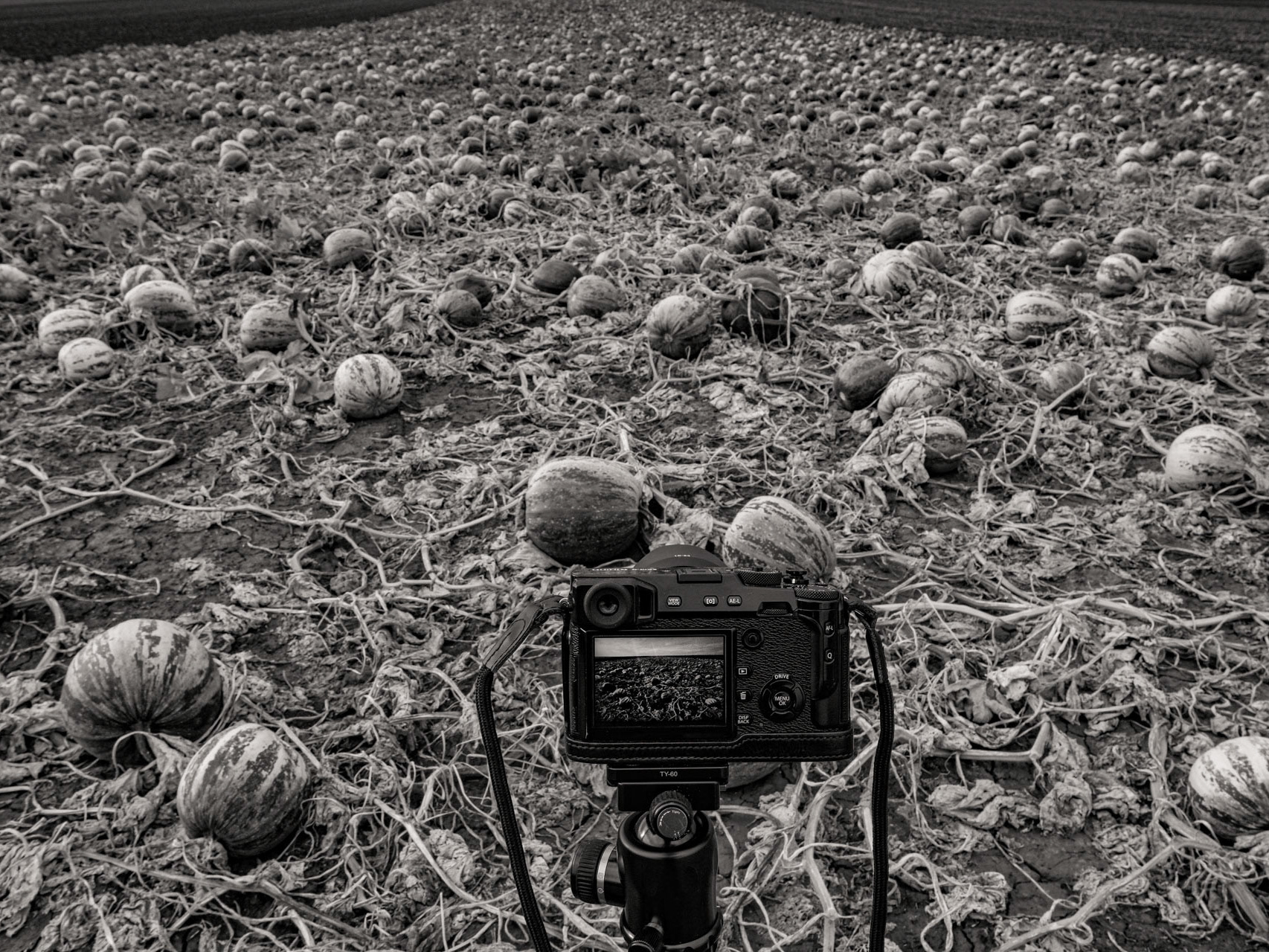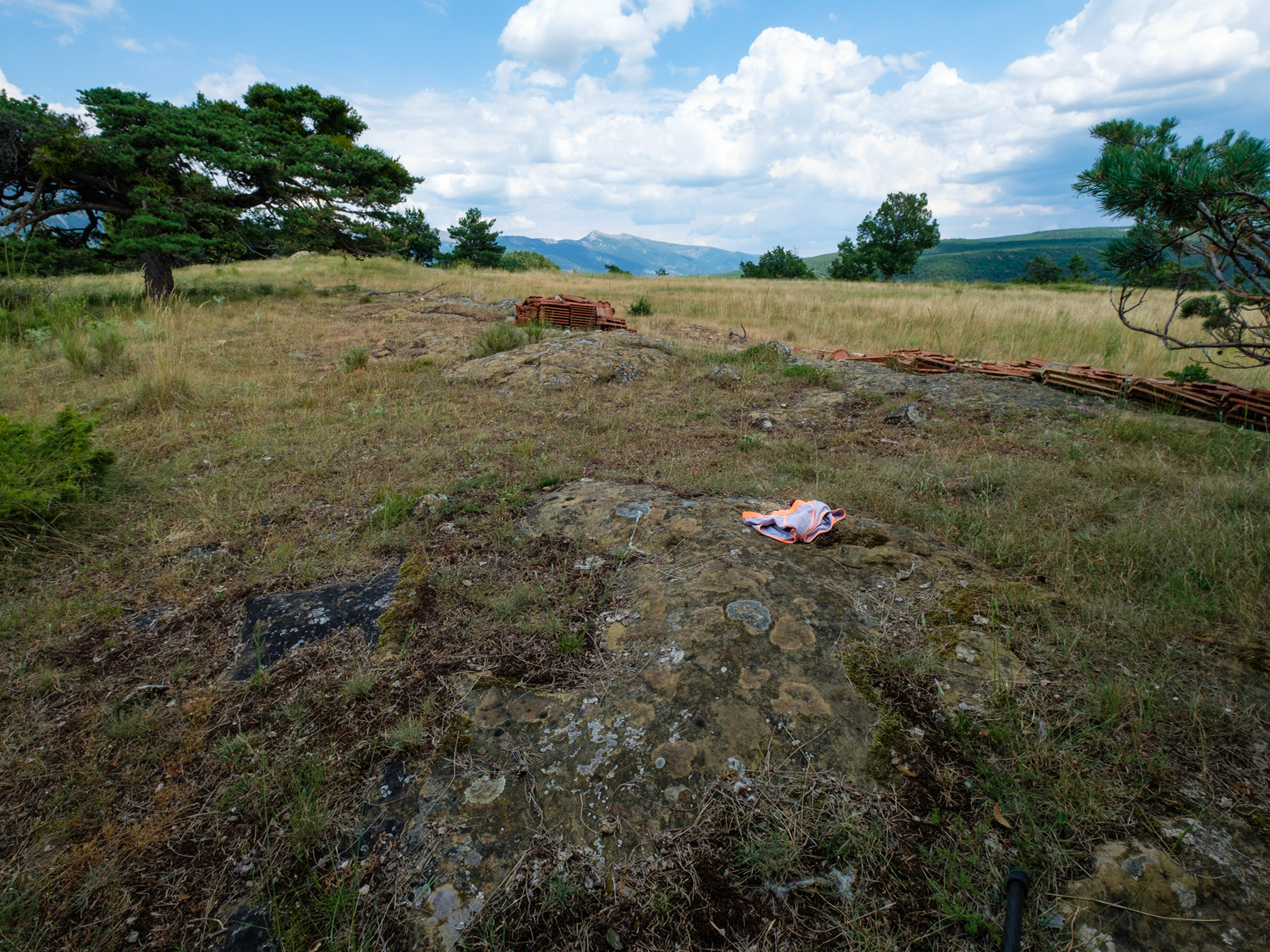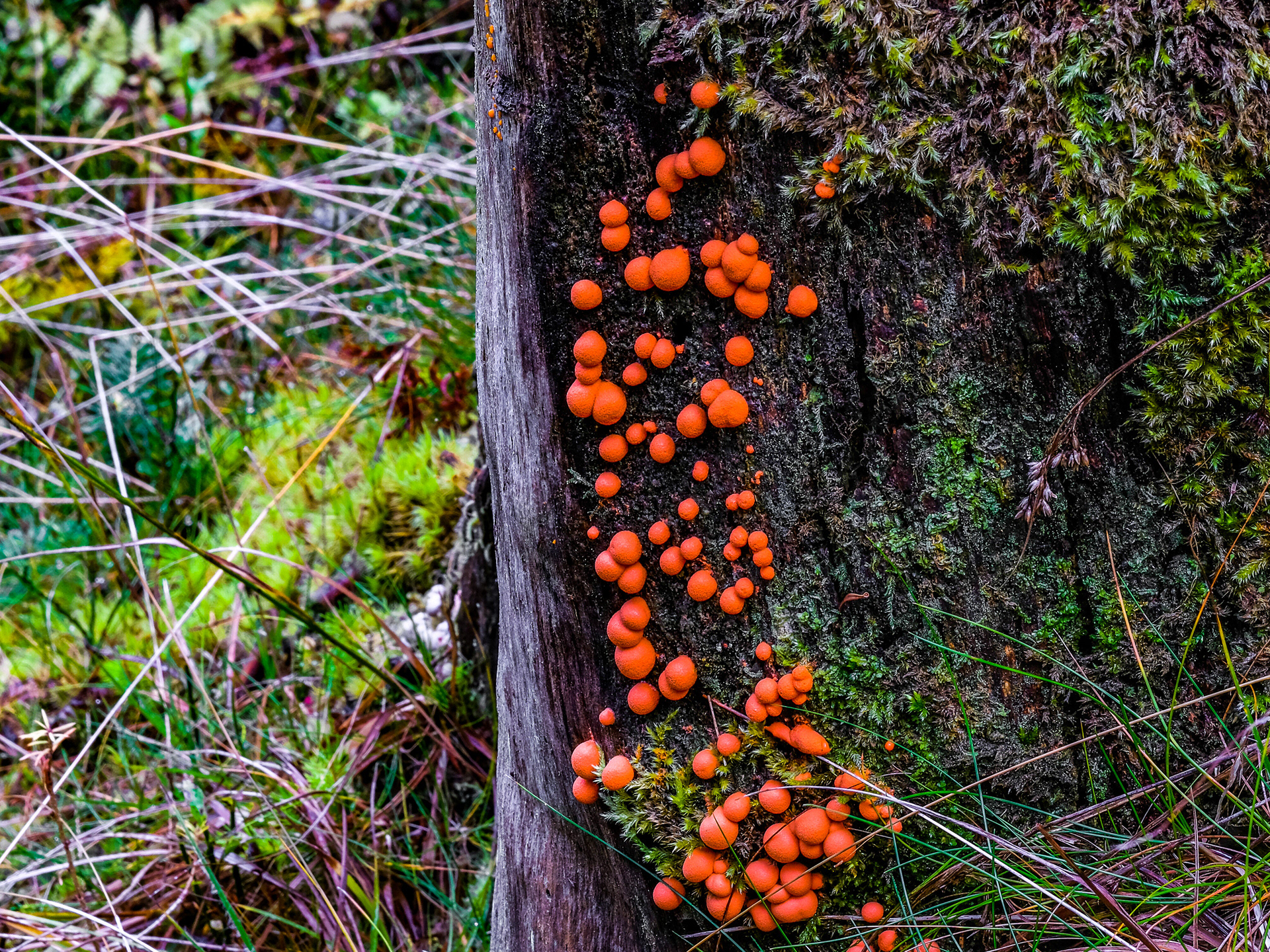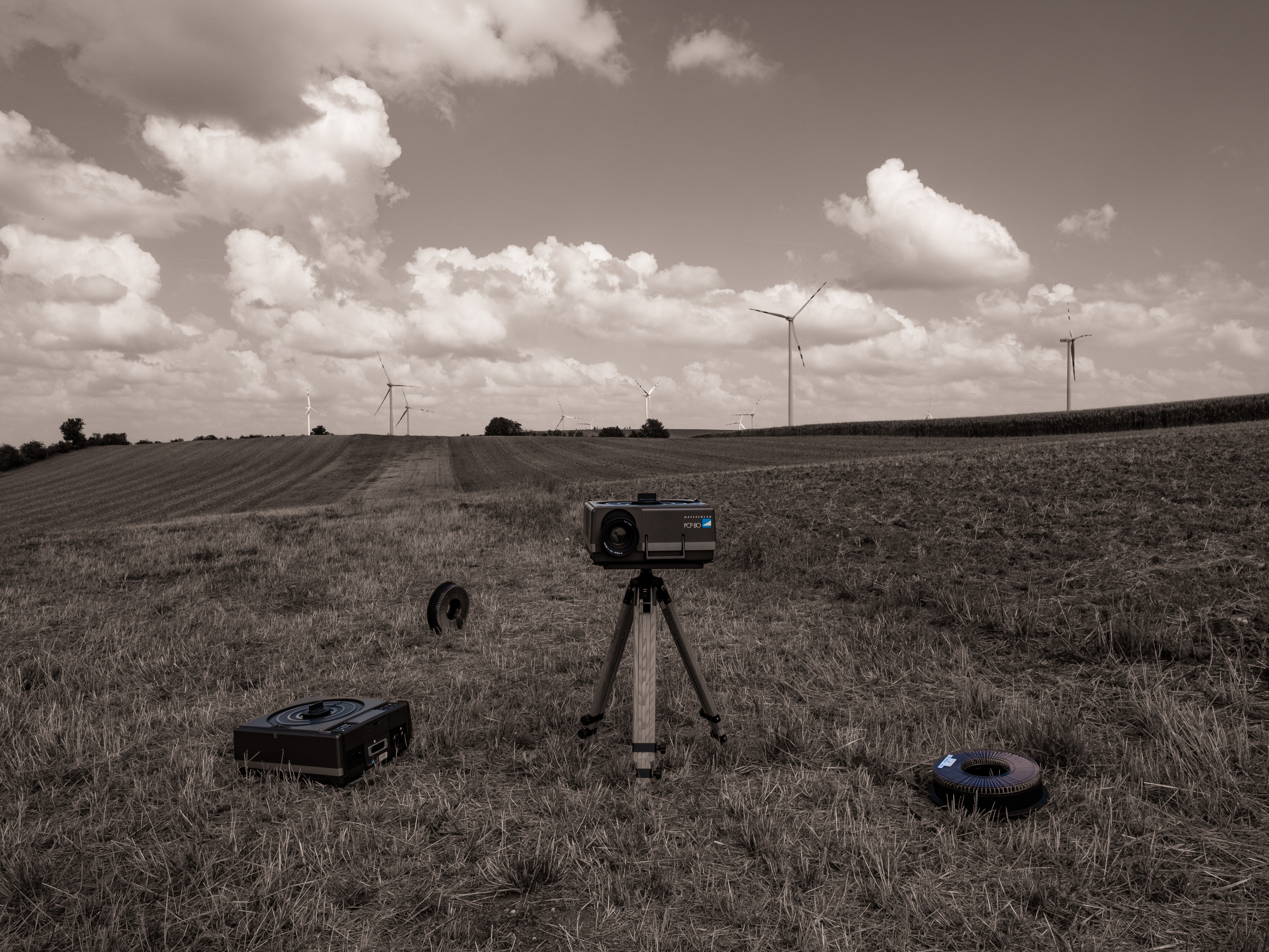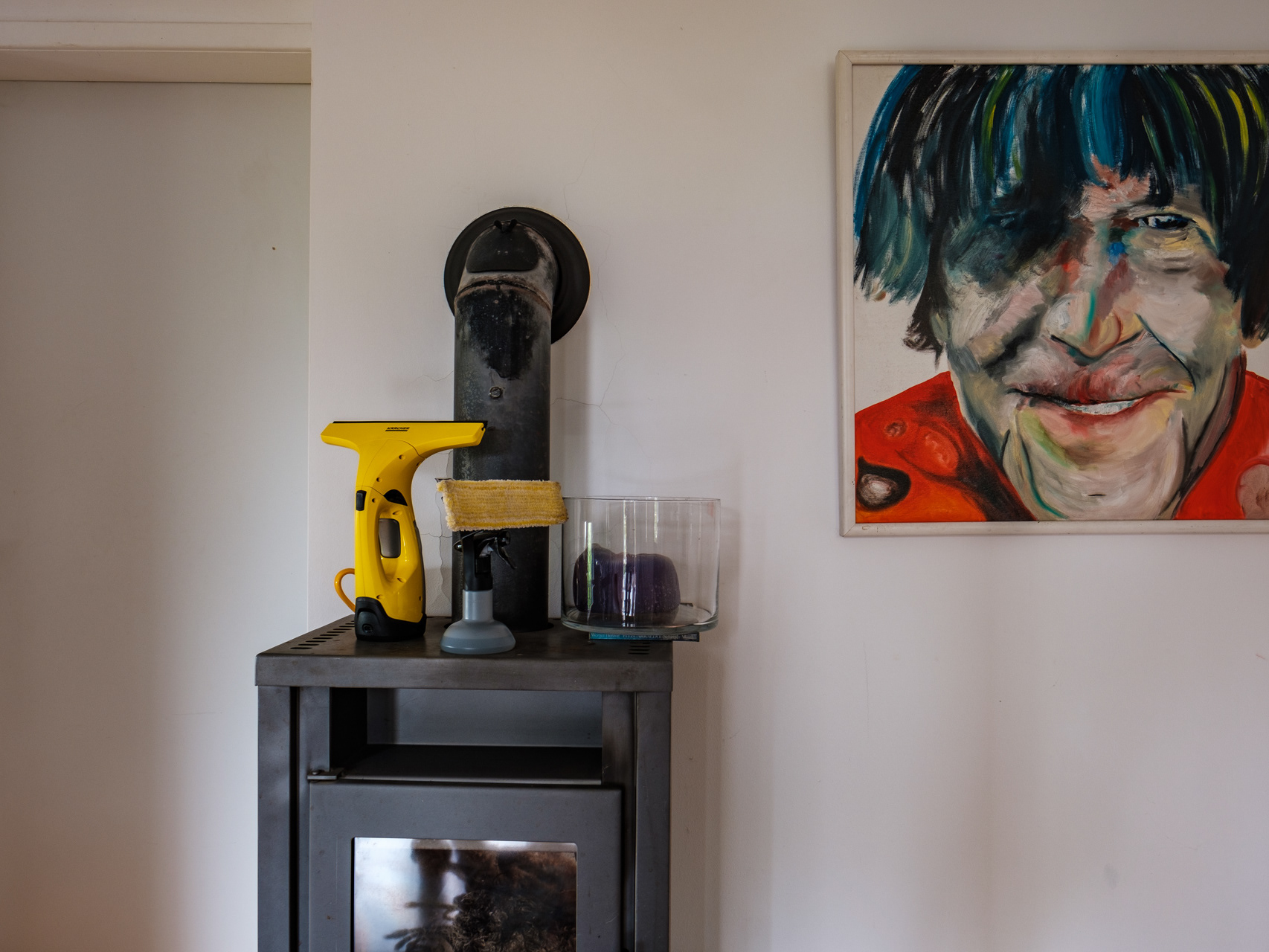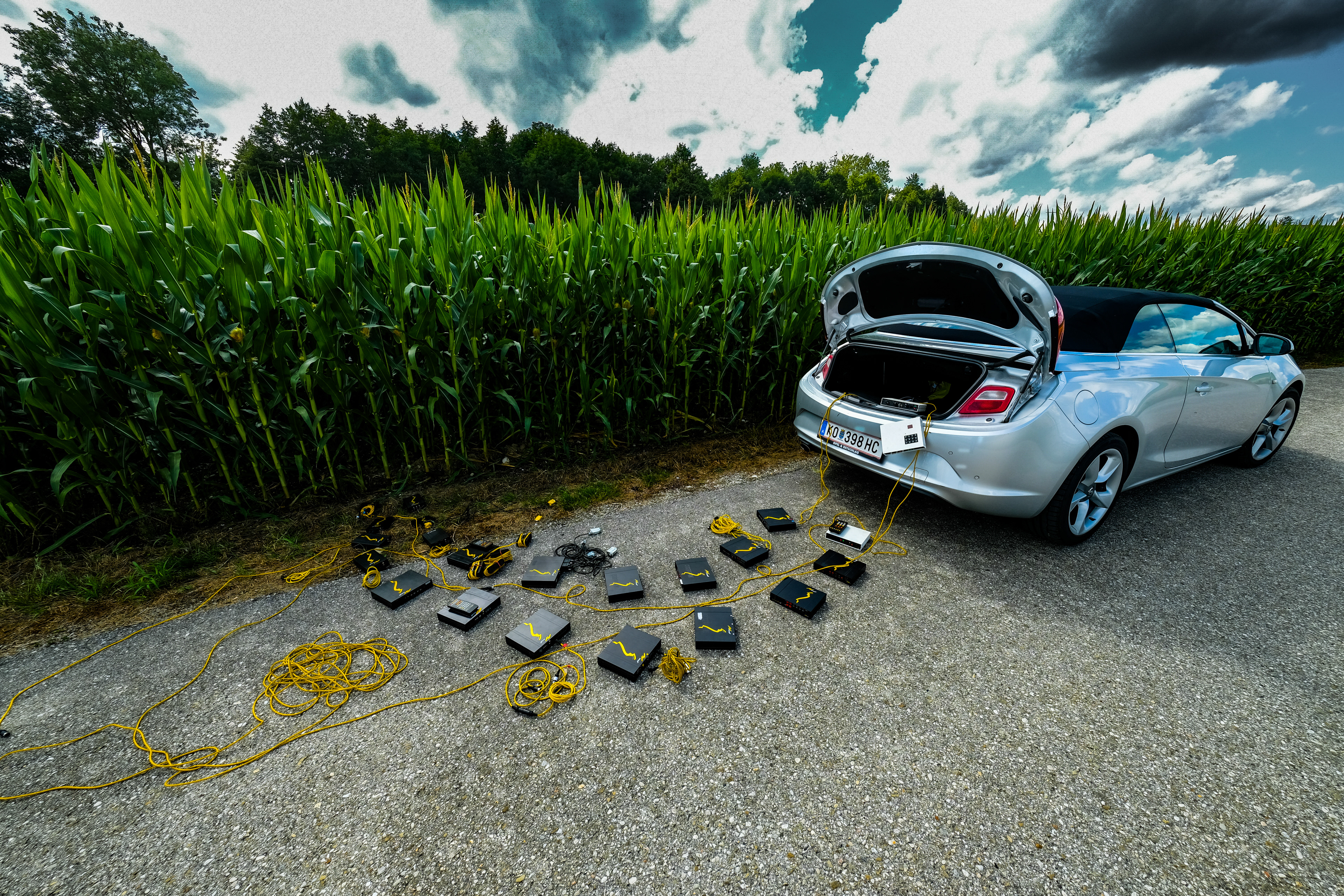
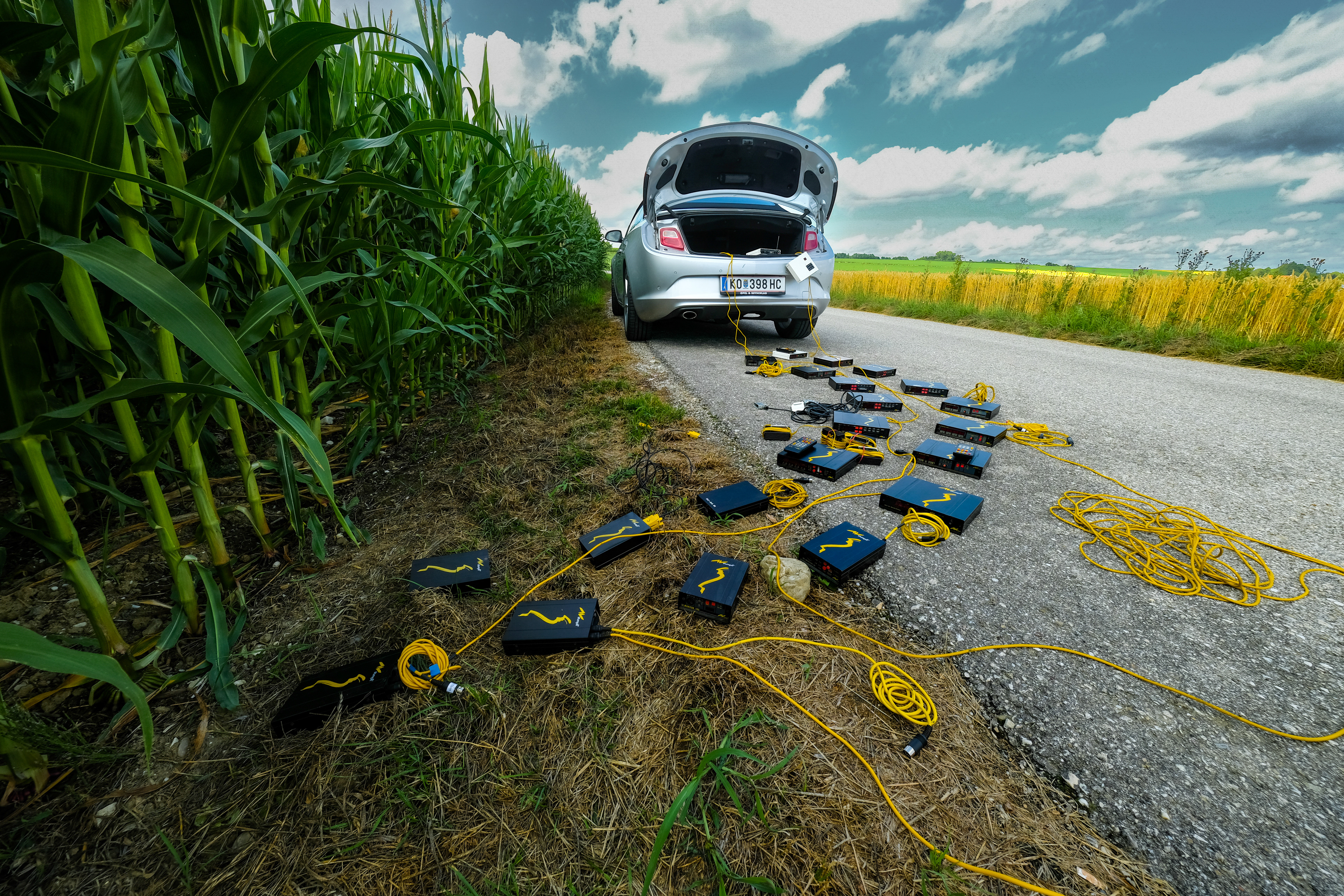
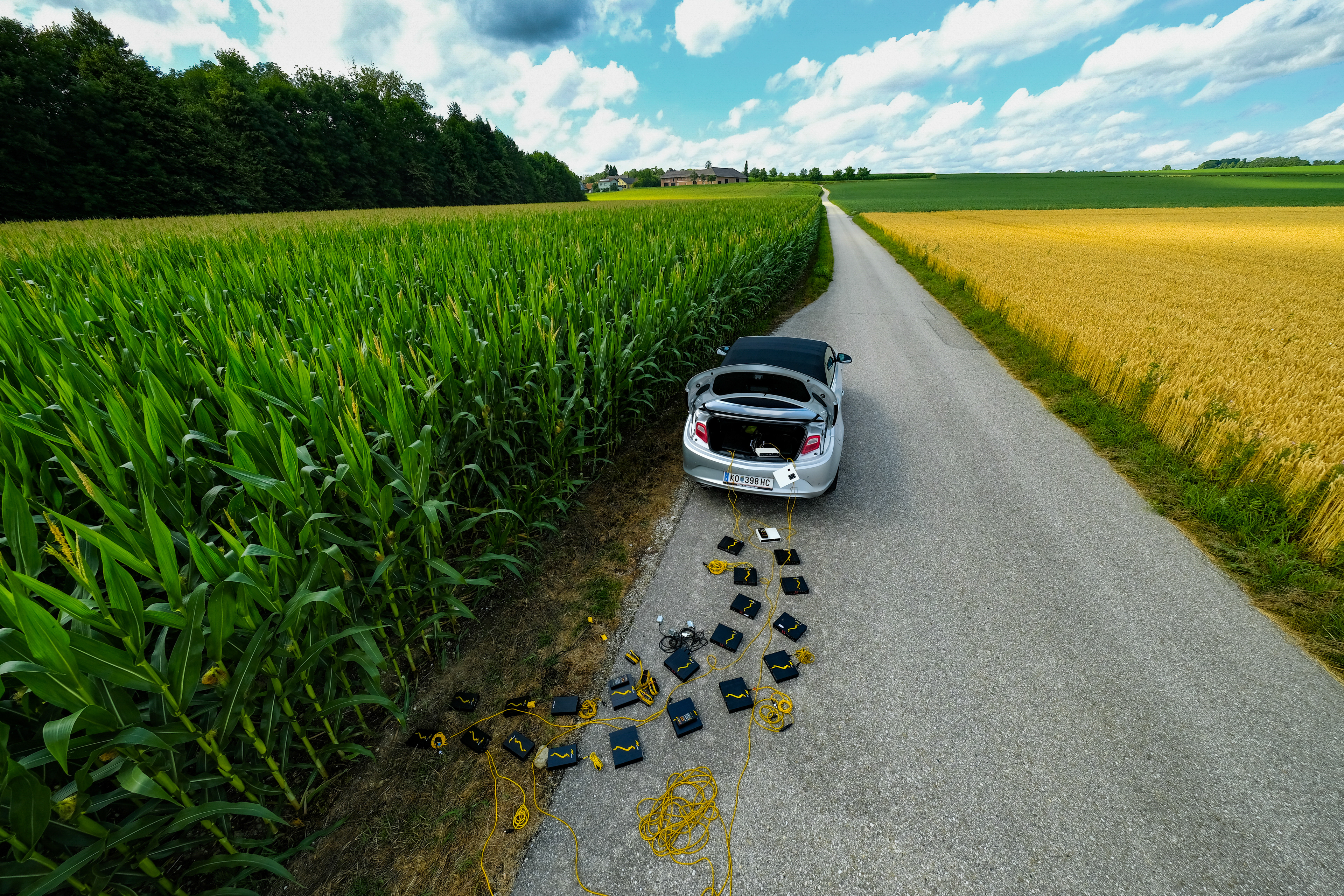
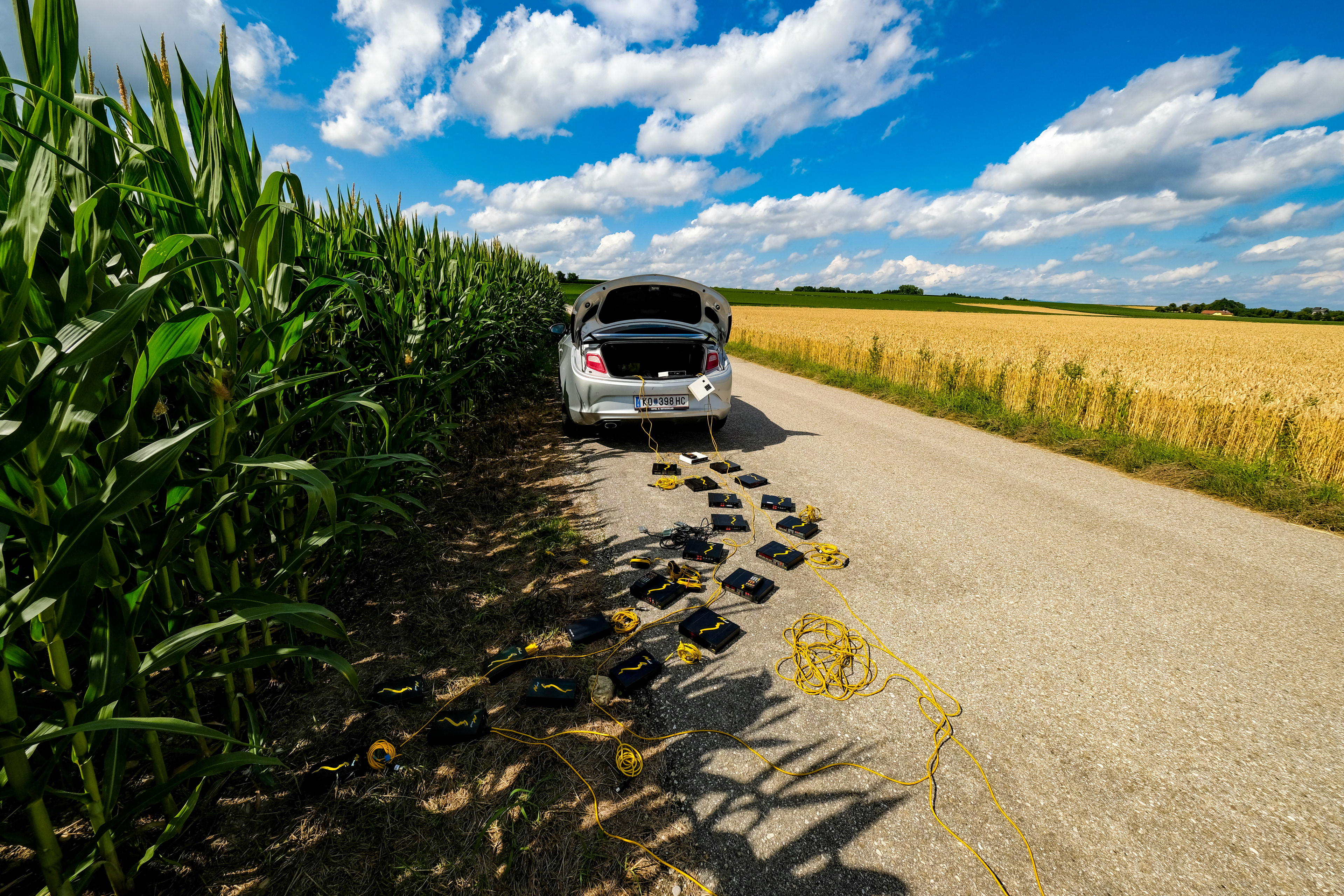
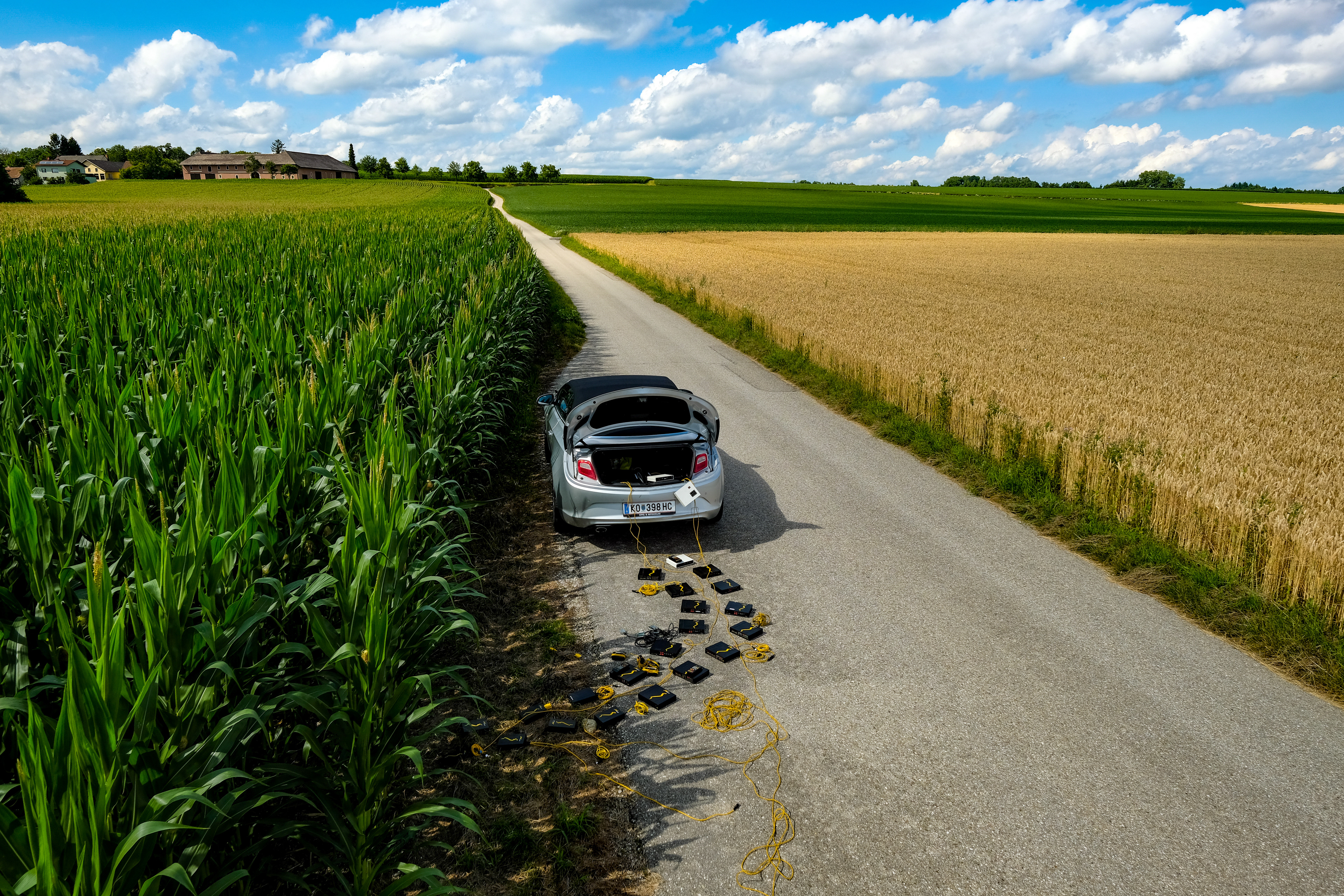
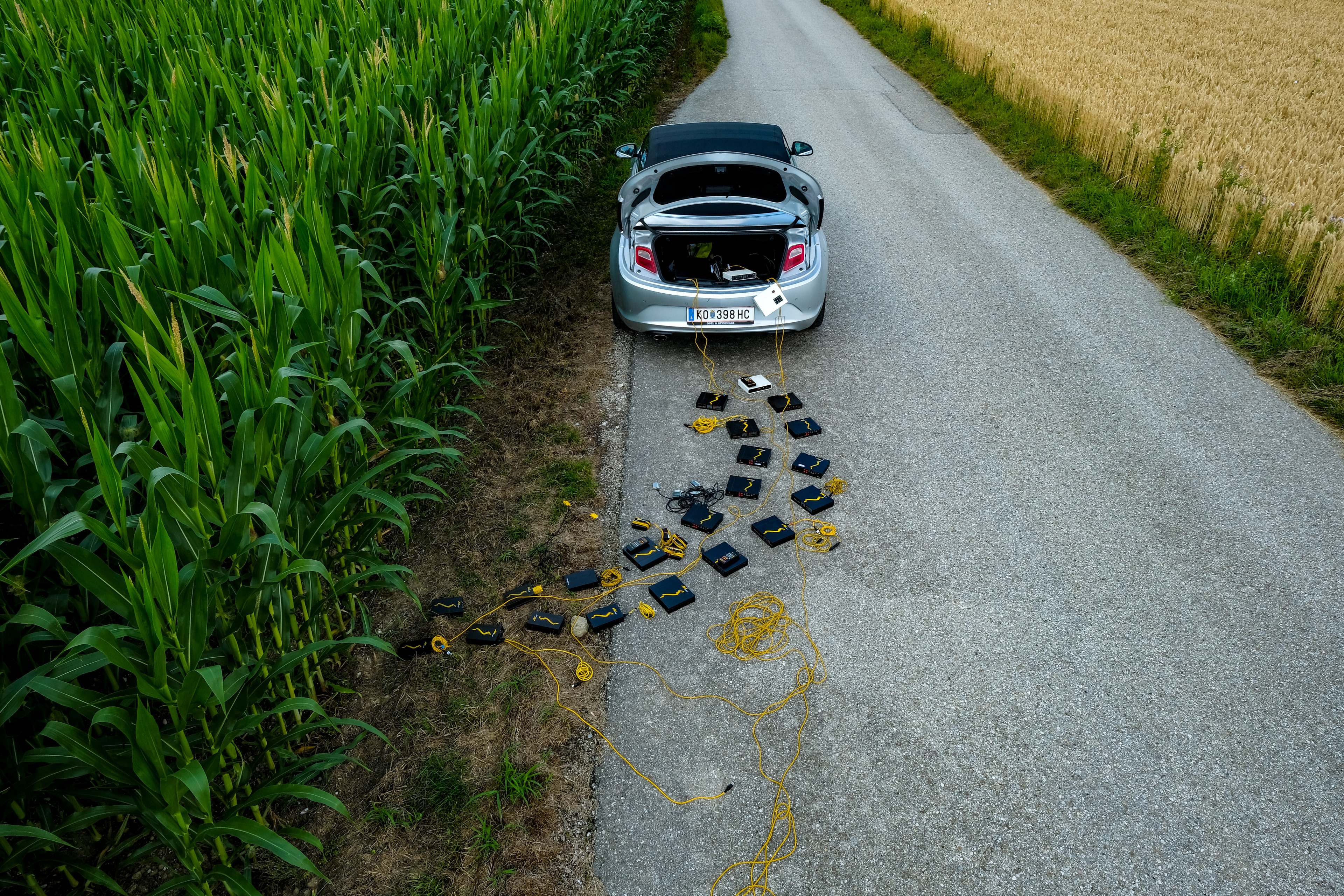
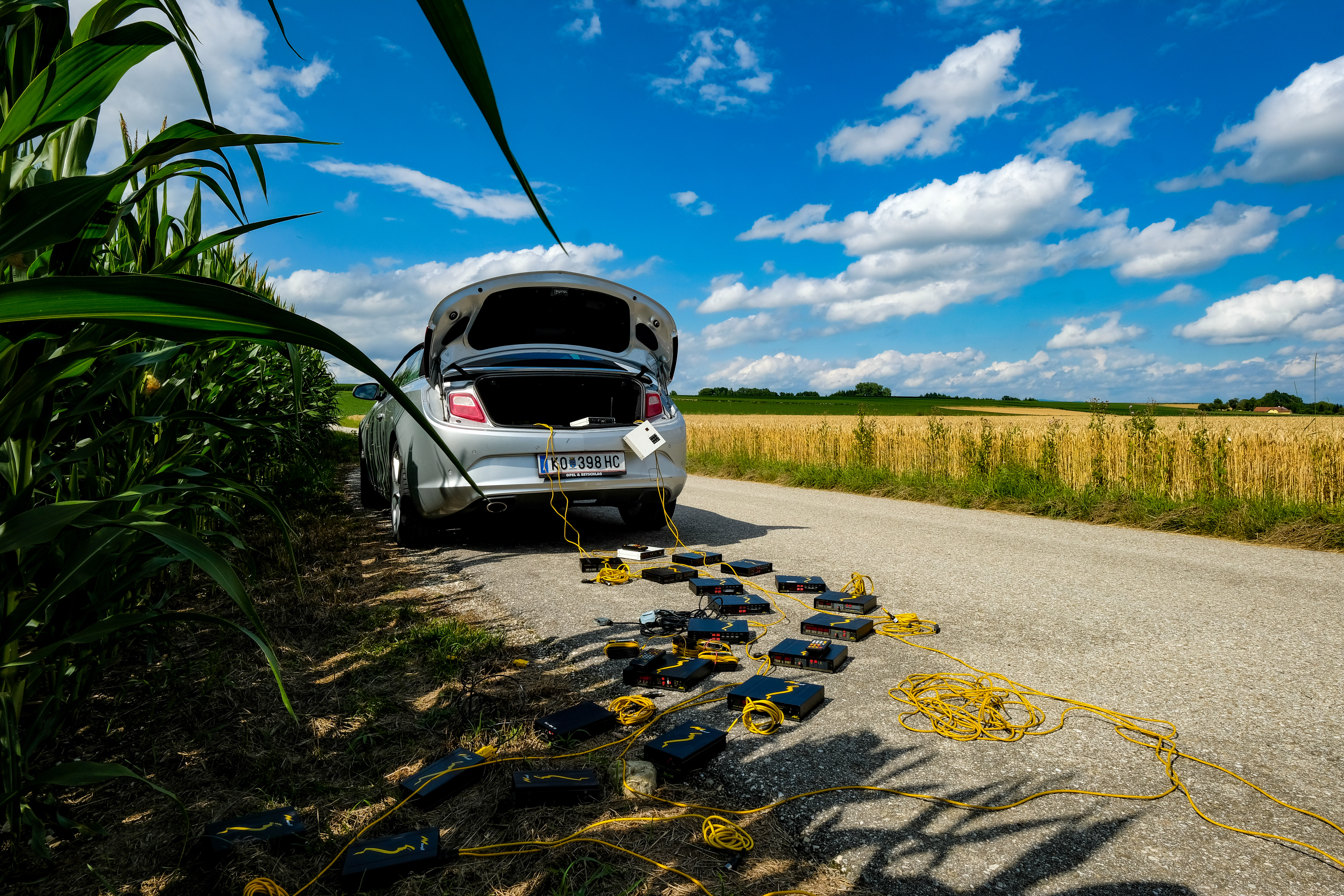
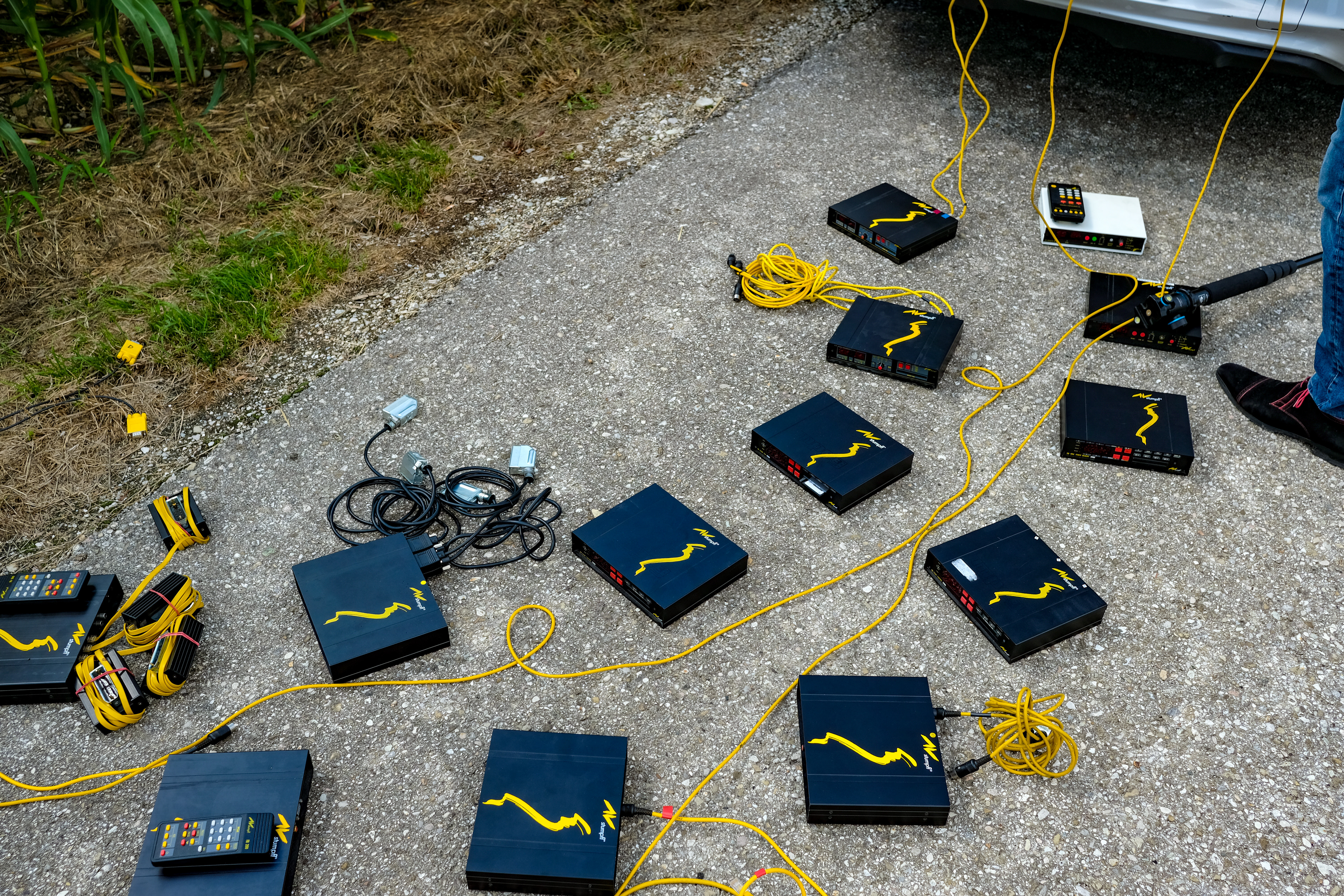
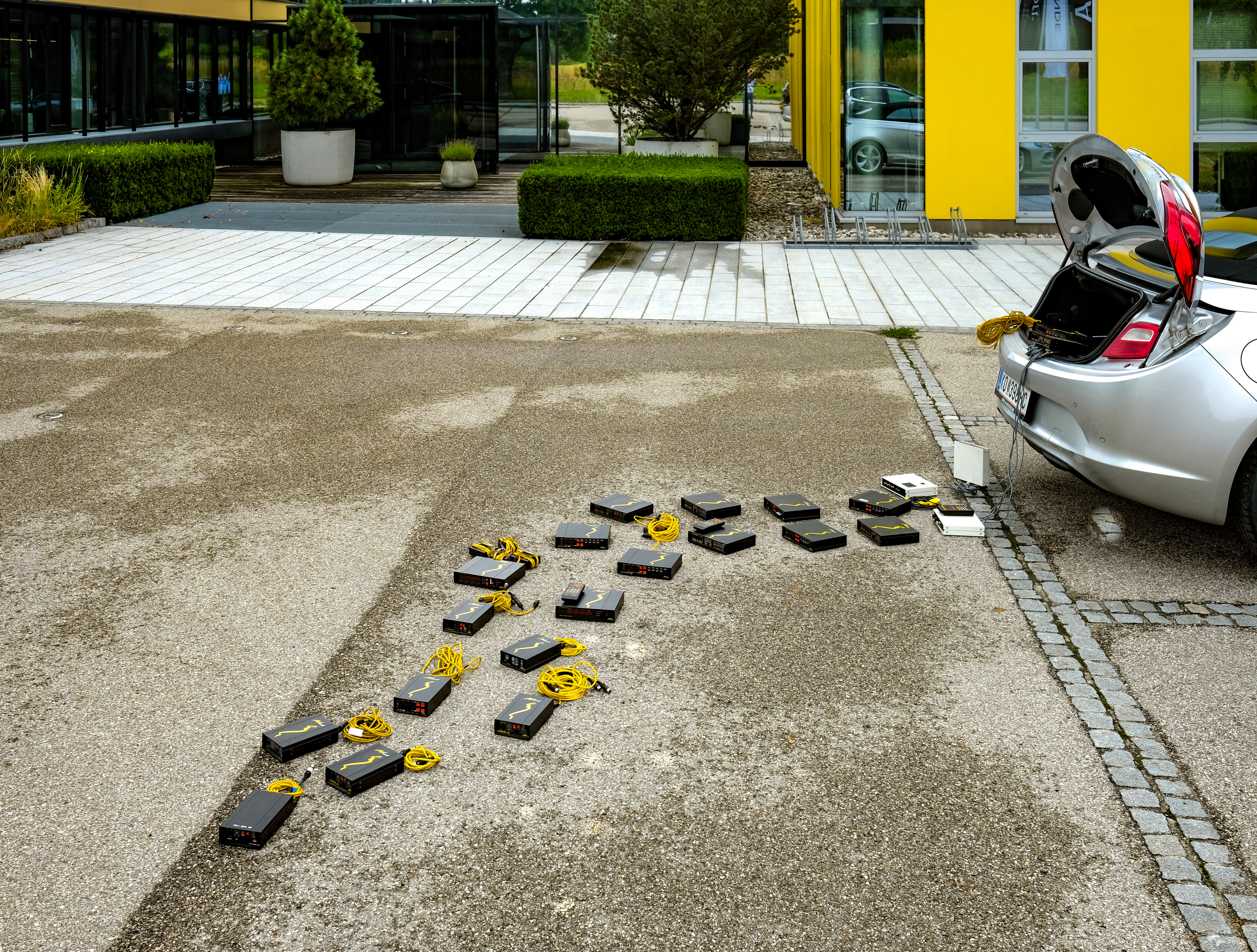
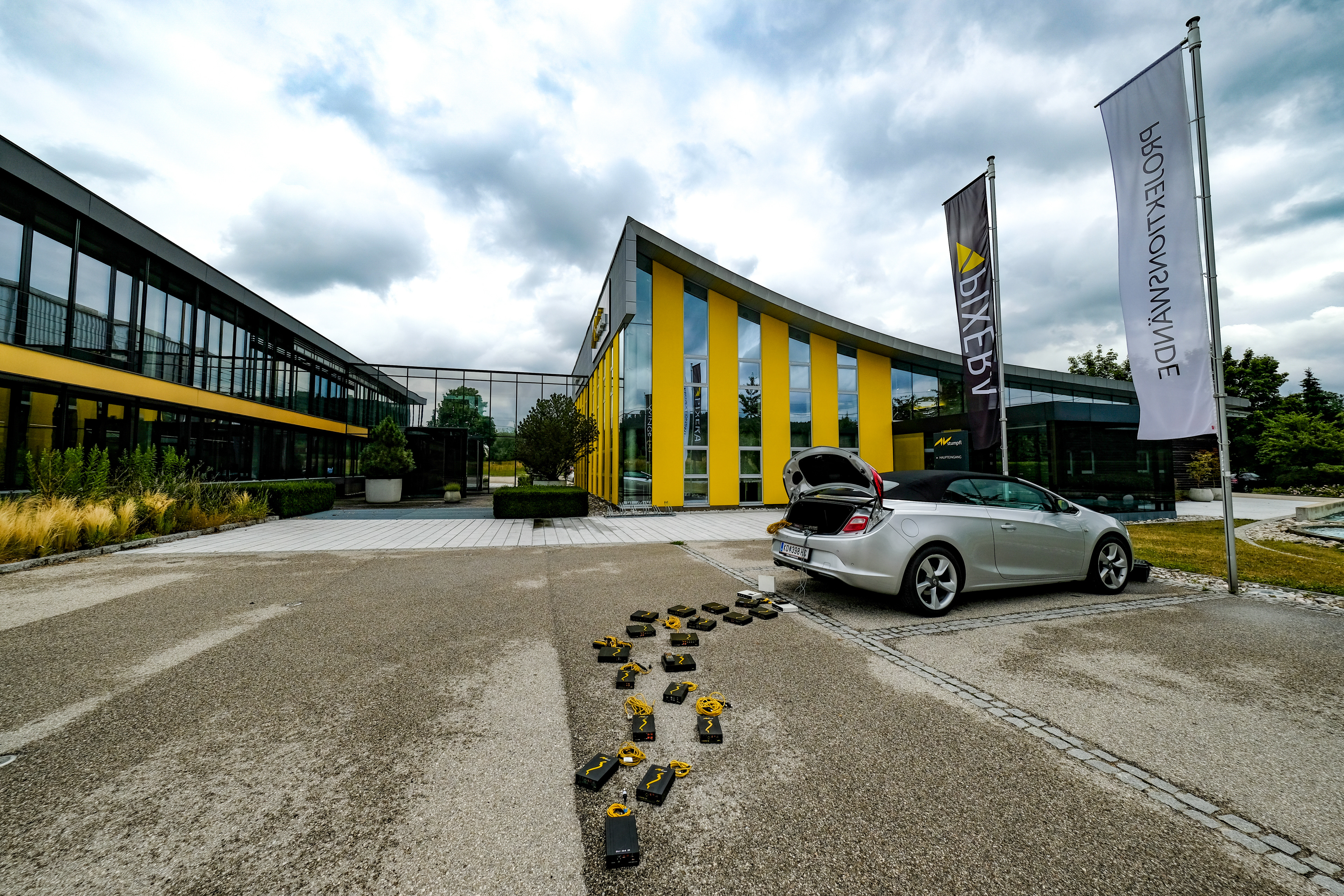
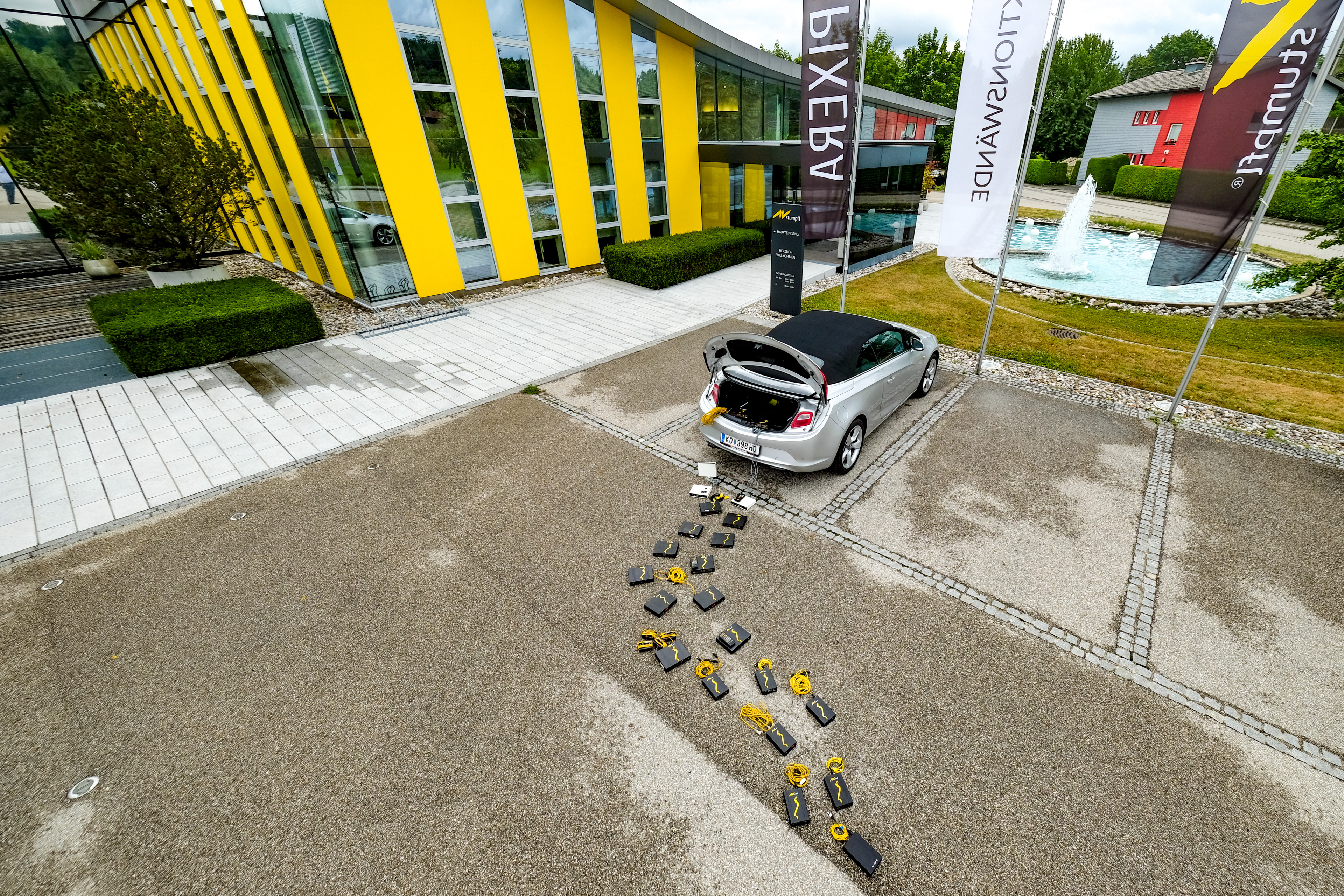
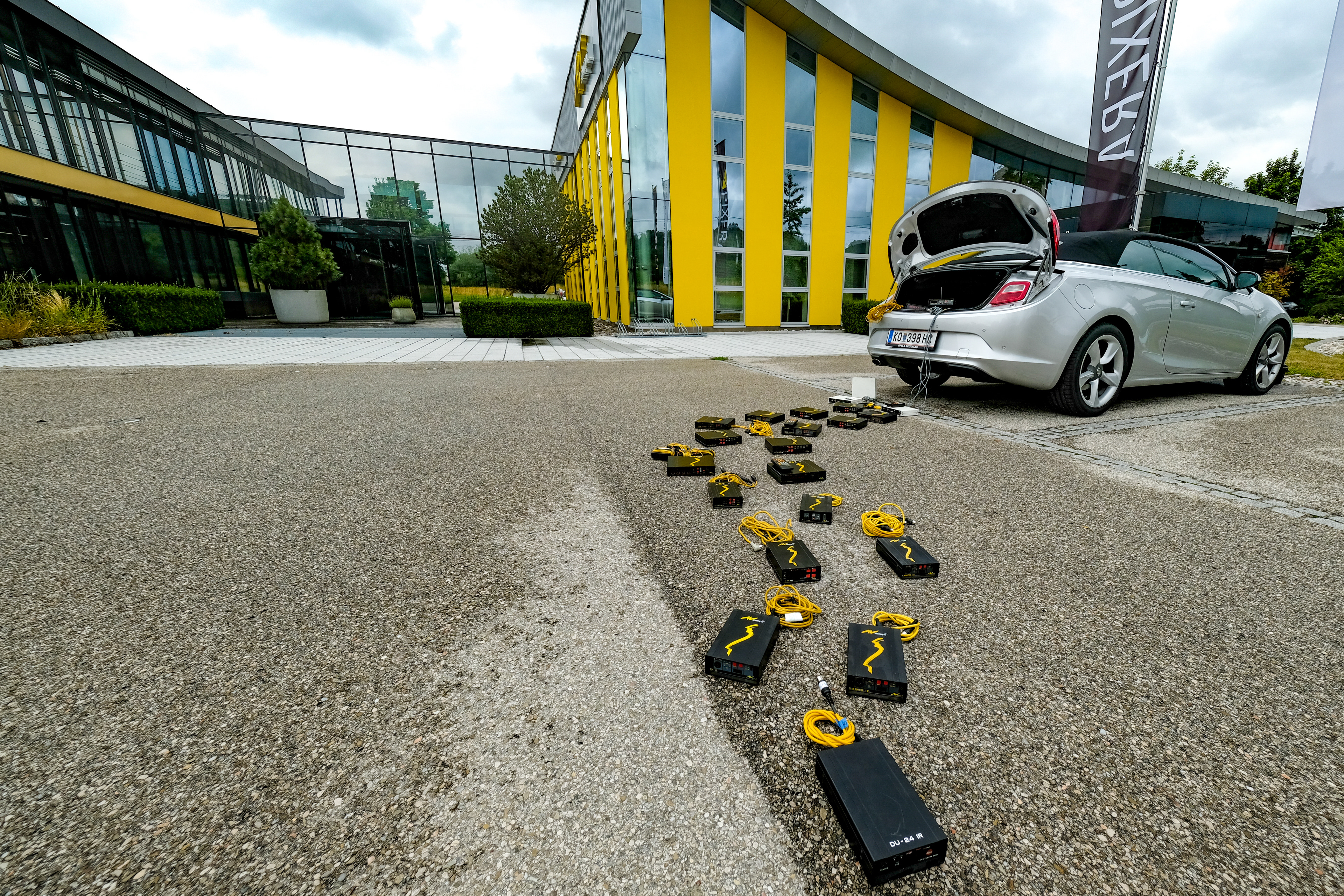
Connecting Beuys’ 'Das Rudel' with 'Das Rudel III' In 'Das Rudel', Joseph Beuys presented a VW van with 24 felt-covered sleds trailing from its rear, each equipped with survival tools like felt, fat, and a flashlight. The sleds appear to escape or spill out from the vehicle—as if in urgent response to an invisible crisis—symbolizing instinct, survival, community, and the primal nature of movement beyond rationality. In the 'Das Rudel III' series, the VW van is replaced by a modern silver convertible. Instead of wooden sleds, sleek black devices (dissolving devices for slide presentations from Stumpfl in Wallern, Upper Austria) are tethered to the car with long yellow cords. The bright cables mirror the connective function of Beuys’ sled ropes but speak in the language of modern networks—electricity, data, signal transmission. Where Beuys used felt and fat as insulating materials and spiritual symbols of healing, the yellow cables and black boxes hint at an updated toolkit for survival: connectivity, technology, energy. The juxtaposition of the car in pastoral landscapes (cornfields, wheat fields) suggests a kind of techno-nomadism, or a dislocation—a digital “pack” trying to reconnect to its environment. The orderly yet scattered arrangement of the devices feels animalistic, like a scattered herd or, again, a Rudel.












